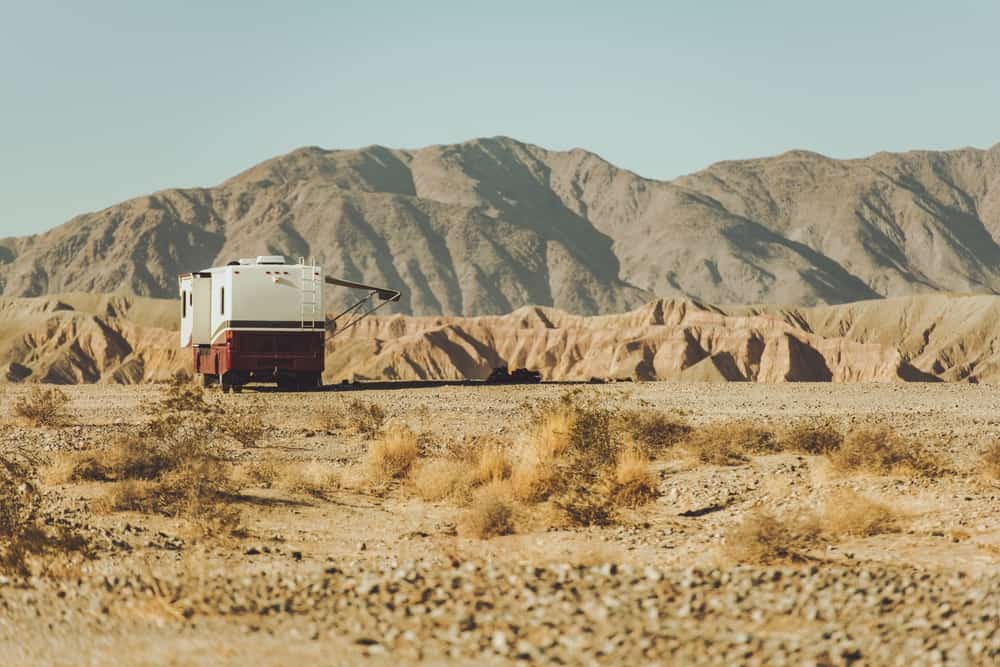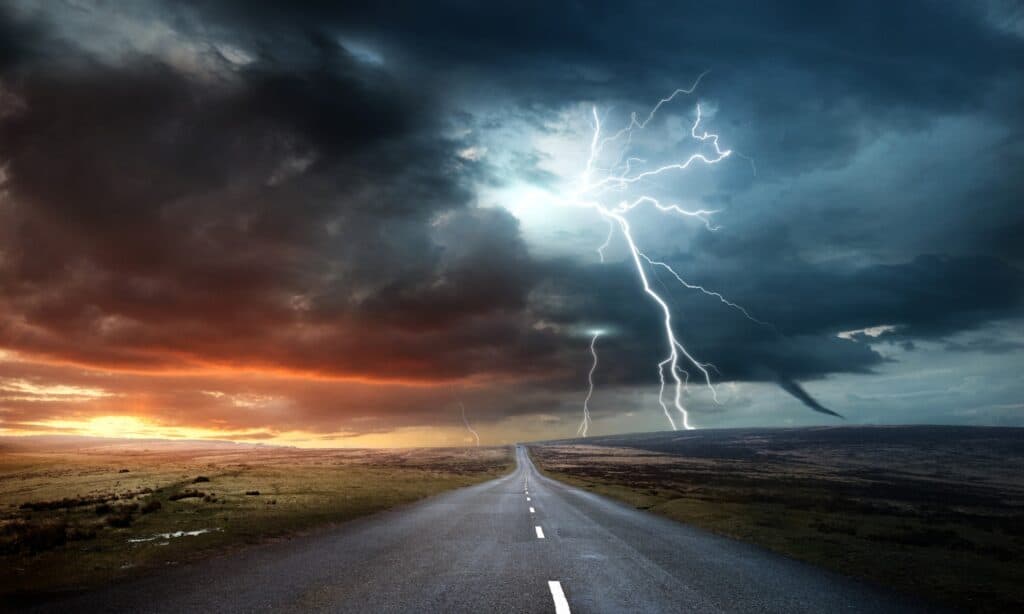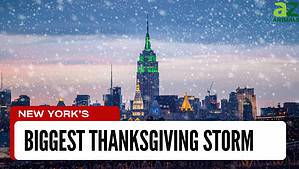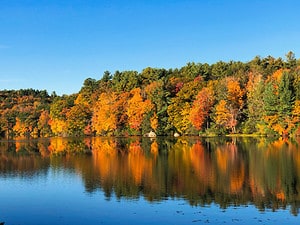Quick Answer:
- The increase in the number and severity of wildfires in California in the past decade is attributed to climate change.
- California has a Mediterranean climate with the main precipitation occurring in winter, while the summers are hot and dry. Additionally, dry grasses, shrubs, and pine needles in that region are highly flammable.
- The seasonal Santa Ana winds every fall dry out vegetation even more, increasing wildfire risk.
In recent years, wildfires in California have grown in their enormity. Thirteen of the most destructive wildfires in California have occurred within the past five years. These wildfires were collectively responsible for destroying up to 40,000 properties and pieces of infrastructure. The wildfires during this period burned up a land area equivalent to about 4% of the state’s total land area.
The average size of the fires and the total area burned have been on the increase in recent years. Why do California wildfires occur so often? Climate change is considered the main cause for the increase in the number and severity of wildfires in California over the past decade. However, the problem can also be linked to three other major factors, which are both natural and man-made. Read on to learn more about why California has so many wildfires.
Why California Has So Many Wildfires: Natural Factors
All a fire needs to start is dry enough fuel and something to spark it. As it turns out, these two ingredients are readily available in California. Various natural factors interact to make conditions suitable for a fire to start. Here are two of the major natural factors that increase the chances of wildfires in California
The Natural Landscape and Climate of Western United States
California’s location is our first pointer to why wildfires occur so often here. The state is located in the Western United States with a predominantly Mediterranean climate. California is dry for most of the year. Precipitation only comes during the winter months. This is typically followed by a dry and hot summer.
The climate also influences the type of vegetation that grows in this region. Dry grasses, shrubs, and pine needles are highly flammable. Combine this with the already dry weather, and you have all the fuel needed to start a fire.

California’s climate and dry, flammable plants contribute greatly to the state’s high incidence of wildfires.
©Virrage Images/Shutterstock.com
Santa Ana Winds
Another natural factor that increases the risk of wildfires in California is the Santa Ana winds. This seasonal, extremely dry wind blows from the Great Basin Area into California during the fall. The wind helps to dry out the vegetation even more, increasing the risk of wildfire. The Santa Ana winds have also been known to start fires by knocking down power lines or aiding the spread of fires by carrying embers further than they would have gone.
Climate Change
Most of the crazy weather phenomena we’re experiencing today – including wildfires, can be linked to climate change. California is now hotter and drier than it was many years ago.
Generally, temperatures in the West have increased by up to 1.5 degrees Fahrenheit compared to what it was about 100 years ago. This has been accompanied by a serious drought problem. Consequently, the deciduous trees in this part of the country shed their leaves earlier than they should. Also, vegetation dries out faster, and small plants die, adding to the amount of dry fuel just lying around waiting for a spark.
Climate change is why the number and severity of wildfires has worsened in California over the past decade. 8 out of 10 of the largest fires on record in California since 1932 have happened within the past five years alone. Due to climate change, the fire season in California now starts earlier in the year and lasts for up to two and half months longer than it should.
Why California Has So Many Wildfires: Human Factors
Humans often provide the spark and nature simply takes over from there, stoking the fire even more. This can be either directly through activities that spark wildfires or indirectly through actions that increase the risks and spread of these wildfires. Some of these include:
Human Settlement
No matter how dry conditions are, fires still need a spark to start. Lightning strikes only provide the striking force half of the time. The other half of wildfires are started by humans one way or the other. The increase in the population of California over the past years is a major contributor to the occurrence of wildfires.
Human infrastructures such as power lines and trains often provide the spark wildfires need to start. People may also cause fires directly through campfires, tossed cigarettes, cars backfiring, and other similar factors. Wherever humans live, the potential of fires occurring increases.

Lightning strikes start only half of California’s fires. The rest are started by humans — either accidentally or deliberately.
©iStock.com/solarseven
Fire Suppression
Perhaps the biggest way humans contribute to the frequency and intensity of wildfires in California is through our efforts to suppress them. For the last century, the government and the people of California have ramped up efforts to suppress fires and have done really well. But this move might be more counterintuitive than expected.
Before human settlement in the American West, wildfires had been a regular part of the natural ecosystems. In fact, many trees in the areas need the wildfire to reproduce, and they’re well-adapted to surviving it. Forest fires used to be a form of forest maintenance by native communities in the 1800s.
However, starting from the 1900s, California instituted a policy of aggressive fire suppression. Fires are now put out as quickly as possible to minimize damage to human settlements. However, the unexpected consequence is that California’s forests have grown denser than ever. This provides ample amounts of dry fuel material for explosive forest fires. The densely parked materials burn faster and hotter with every fire season.
Additionally, fire suppression has reduced the tolerance of the shrubs and trees in California forests to wildfires. For instance, the white fires in California forests now have needled growing on their trunks. This often serves as ladders for the flame to get to the tree canopy. This leads to crown fires which are typically more difficult to contain. Recognizing the threat that fire suppression poses to the management of forest fires in California, the Forest Service in recent years has been carrying out “controlled burns” or “prescribed fires.”
Conclusion
California’s natural environmental condition has all the recipes for fires to start. Nature creates all the right conditions for fires while humans provide the much-needed spark. In recent years, climate change has opened the fire season window even wider, while efforts to keep the fire from hurting people provide even more fodder for the fuel.
What’s Next
- The 10 Biggest Wildfires in Colorado
- The Cities at the Biggest Risk of Deadly Wildfires
- Wildfire vs. Bushfire: What’s the Difference?
- The 8 Most Common Wildfire Triggers and How They Start
The photo featured at the top of this post is © iStock.com/Dimple Bhati
Sources
- New York Times, Available here: https://www.nytimes.com/2022/08/01/climate/wildfire-risk-california-west.html
- Earth Observatory NASA, Available here: https://earthobservatory.nasa.gov/images/148908/whats-behind-californias-surge-of-large-fires
- New York Times, Available here: https://www.nytimes.com/article/why-does-california-have-wildfires.htm
Thank you for reading! Have some feedback for us? Contact the AZ Animals editorial team.






